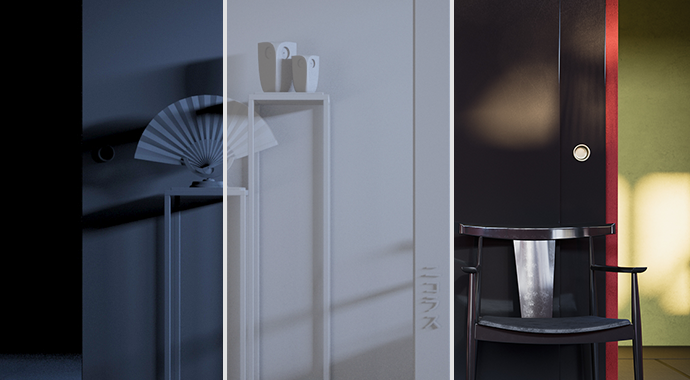4.10.01
Date – 29 November, 2018
Download – Build 4.10.01
Complete changelog - V-Ray Next, Update 1
NEW VIEWPORT IPR & IMPROVED INTERACTIVITY
Keep working while you render with fast new viewport IPR. Interactivity in V-Ray IPR on CPUs is now faster and supports atmospheric effects.
NEW LENS EFFECTS
New glare and bloom lens effects have been fully redesigned to be faster and more accurate.
GPU BUCKET RENDERING
Faster multi-GPU performance on workstations and distributed rendering, plus added support for Cryptomatte render elements.
GPU FAST FOG
Faster, better sampling of environment fog helps you quickly add depth to any scene with V-Ray GPU.
GPU DISPERSION
Now available in V-Ray GPU, render highly accurate light refractions that split into their component colors.
ROLLING SHUTTER
Emulate the warped motion blur effects common in digital video and cell phone cameras.
GLINT & GLITTER HAIR CONTROLS
The V-Ray Physical Hair material adds new Glint and Glitter controls for better highlights.
IMPROVED LIGHTING RENDER ELEMENT
Improved lighting passes provide consistent, artifact-free results that are independent of light sampling as well as better support for the Adaptive Dome Light.

ENHANCED COLOR CORRECTIONS
VFB color corrections (incl. Background and LUT) can be saved with the final render as raw .vrimg or OpenEXR files. LUT strength can also be controlled.
IMPROVED V-RAY CLOUD SUPPORT
Improved V-Ray Scene export adds support for more features when rendering on V-Ray Cloud.
Learn more >

Since V-Ray Next Update 1, some of the render elements are rendered differently than before. The Lighting render element now contains all direct diffuse illumination and the GI element contains all indirect diffuse illumination. Similarly, all direct reflections of lights now go to the Specular element and all indirect reflections go to the Reflection element.
Previously this behavior depended on the sampling of the lights and not just on the type of the contribution. Some of the direct contributions that should be in the Lighting and Specular elements were written to the GI and Reflection elements instead. In both cases they compose back to Beauty correctly but the different types of contributions are now split between the elements more consistently.
This change makes the elements more consistent but it's also needed for preventing artifacts in these elements with the adaptive dome light (and possibly in the future with other adaptive lights).
The raw elements are affected only when the corresponding normal and filter elements are available, otherwise they're rendered as before. This is because the raw elements have to be derived internally from the corresponding normal elements in order to work with the consistent elements (f.e. VRayRawGlobalIllumination = VRayGlobalIllumination / DiffuseFilter).
There's an option to enable or disable the new behavior in the Global Switches rollout under the V-Ray tab in the Render Setup window. The consistent elements are automatically enabled when the scene contains an adaptive dome light so they don't have artifacts. They are also enabled by default for new scenes. For V-Ray GPU they are always enabled without an option to disable them.